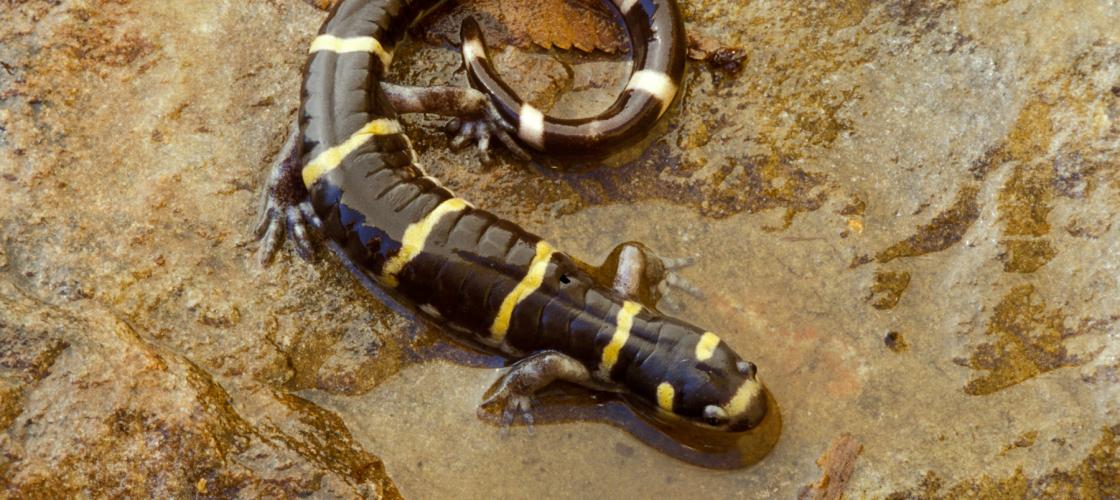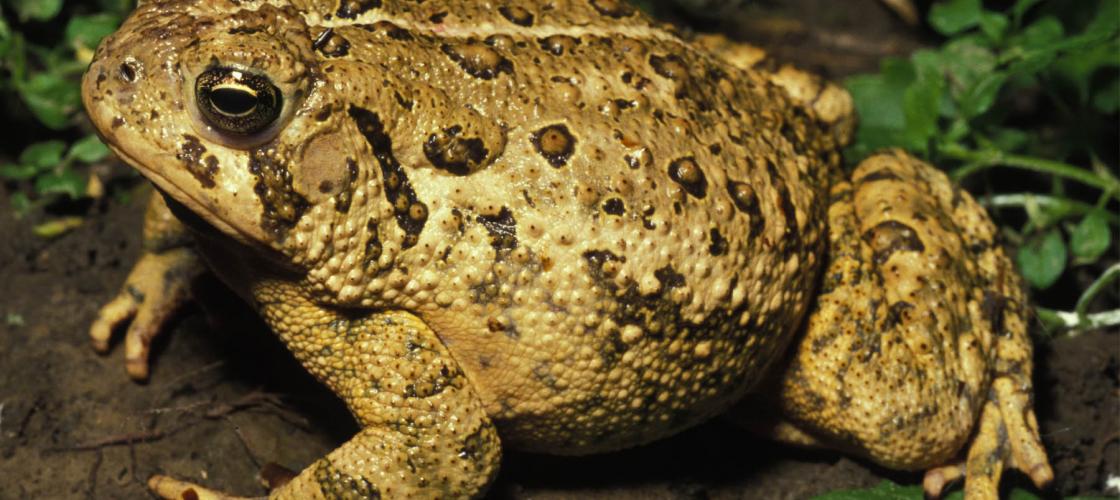On winter walks, you don’t expect to hear from frog choruses, or see snakes and turtles. Where have these animals gone?
Warm-blooded animals have internal controls that maintain constant body temperatures despite outside conditions. Amphibians and reptiles lack such controls. To avoid extreme temperatures–summers that would bake them and winters that would freeze them–they must find sufficient shelter. Tolerable temperatures and adequate moisture are available underground, in springs and caves, and in the mud in ponds and stream bottoms. Toads, frogs, salamanders, turtles, snakes and lizards migrate to these spots at the onset of cold weather. As the weather grows colder and drier, they move deeper into their shelters.
Species vary in their preferred shelter and their periods of winter dormancy. Generally, amphibians tolerate lower temperatures better than reptiles, and so remain underground for shorter periods. Within a species, adults take shelter sooner than juveniles, and stay there longer.
Because amphibians and reptiles are inactive in winter, they need little food, water and oxygen. Frogs and turtles buried in pond mud can breathe through their skin. Occasionally, turtles or frogs can be seen under the ice.
The tiger salamander is an amphibian found throughout Missouri but is more common in the northern half of the state.
Amphibian or Reptile? Reptile or Amphibian?
- Amphibians, which include salamanders, newts, toads, and frogs, are vertebrate animals (in the phylum Chordata) that spend at least part of their life cycle in water.
- Missouri has 43 species of amphibians, with an additional five subspecies or geographic races. No amphibians in Missouri are venomous — they are harmless to people. The color and variety of salamanders and the calls of toads and frogs in spring and summer help make our outdoors a fun and lively place to be.
- Reptiles are vertebrates (in the phylum Chordata) and most are ectothermal. Reptiles evolved from salamander-like creatures about 315 million years ago. Unlike amphibians, reptiles do not have to live part of their life in water. Early reptiles were the first vertebrates to produce shelled eggs that protected their eggs from drying as they developed. So, reptiles are able to live in dry habitats where amphibians can not survive.
- Missouri has 75 species and subspecies of reptiles: 17 different turtles, 11 different lizards, and 47 different species and subspecies of snakes. Only five snake species are venomous to people. Most are shy and normally avoid people.
Find out more about these two species with the MDC’s Field Guide.




Recent Posts
























